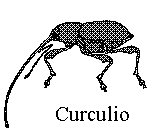
|
|
 |
|
|
|
Index: Text and Apparatus: This is a critical edition of the Conquestio, with a full apparatus criticus. The content is all by J. L. P. Butrica, the formatting by M. Hendry, as explained in the latter's essay Technical Notes. Unedited Text: This text is an unedited reconstruction lost Bobbio manuscript. Readers who object on principle to textual alterations are invited to read it -- or try to read it. Translation: This is located on the Diotima site, and includes numerous explanatory notes, as well as an introduction partly reproduced below. Introduction: The Sulpiciae Conquestio survived antiquity in a single copy preserved at Bobbio in northwestern Italy and formed part of a collection of epigrams and other light verse now known as the Epigrammata Bobiensia. Only a few bits of the manuscript now survive (none containing this poem, however), and scholars have to rely on four sources that derive from transcripts that were made when it was first examined by scholars in 1493 (it has been thought that two transcripts were made directly from the Bobbio manuscript, but the sheer number of errors suggests instead that only one transcript was produced and that our four sources derive from two transcripts of that original copy). One of these transcripts was rediscovered by Augusto Campana in the Vatican library (Vaticanus latinus 2836), while the other (now lost) was the source of the text that was printed in three early editions, all of which had independent access to it (Venice 1496; Parma 1499; Venice 1507). Reconstructing the lost copy at Bobbio is made the more difficult by the fact that the editors of these three editions sometimes incorporated their own corrections, but it is clear that the text had survived in extremely bad condition, with errors not only in individual words but also in the order of lines; and this situation was in no way ameliorated by the fact that the Bobbio manuscript was in a very difficult early minuscule script. Modern scholars have long been reluctant to accept the attribution to Sulpicia; before the discovery of the Vatican manuscript, some even suspected that it was a forgery of the Middle Ages or Renaissance. Reference is invariably made to Emil Baehrens' Habilitationsschrift of 1873 "De Sulpiciae quae vocatur satira" as the definitive demonstration that the poem is a forgery from the age of Ausonius, but no one ever seems to cite any of the arguments that Baehrens used. It is certainly true that the memory of Sulpicia was still alive in that period (she is mentioned by both Ausonius and Sidonius Apollinaris as well as the mythographer Fulgentius), but her reputation was exclusively as a writer of sexy poetry about sex within marriage -- which would seem to make her an unlikely figure to appropriate for an exercise in denouncing Domitian's expulsion of philosophers from Rome. I do not myself know the arguments that Baehrens used, but they probably involved a very few metrical anomalies, which could well be the result of textual corruption, and a very few close parallels in phrasing between this work and later poets like Prudentius and Dracontius, which could as easily be explained by their dependence upon her as by this author's upon them if they are not entirely coincidental. While not an undiscovered masterpiece, the work (as far as we can tell given the wretched condition of the text) is competent and effective, and there seems to be no sound reason why it should not be taken at face value, as a work written by the same Sulpicia, wife of Calenus, who was known to Martial. Text, apparatus, introduction, and notes © J. L. P. Butrica 2000. Formats © M. Hendry 2000. |
|
|